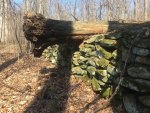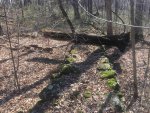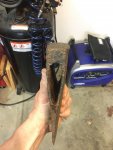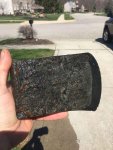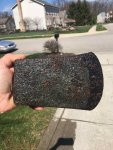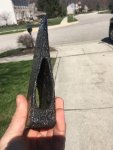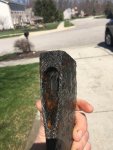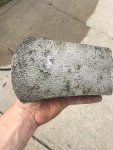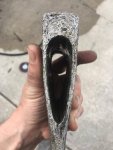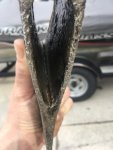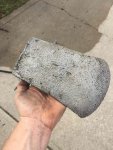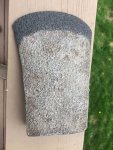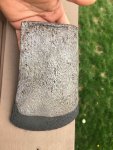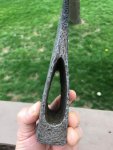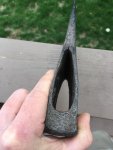- 2,824
- 136
A couple weeks ago, Levi and I decided to go camping for a couple days while he was on spring break. It's pretty traditional that the first camp of the year we always go up to one of the hunting properties that my club owns, just the two of us to get away from the girls and do our thing.
One of the things we like to mess around with is a metal detector while camping. It's nothing that we take serious, but fun non the less. I had told Levi that there was an old stacked stone wall on the back 40 that he had never hiked to and that it would be a fun place to explore with his detector. This wall at one time probably enclosed about 5 acres of homestead from who knows when.
In short time we started to pick up some in identifiable pieces of metal, likely old pins or keepers to wagons and such. Much to Levi's lost enthusiasm I kept going as the briers got pretty thick I had one last dig to find. This time the tone was of something quite a bit larger and that is when I found this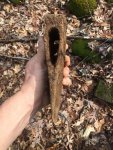
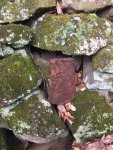
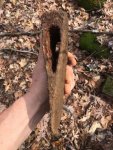 now of course the first thing I did was send it to one of our resident axe head pros Joe. As I know nothing but what I have read from Tom and him on here. Joe informed me that it looked like a big Dayton pattern head and to clean it up and we would see more about it.
now of course the first thing I did was send it to one of our resident axe head pros Joe. As I know nothing but what I have read from Tom and him on here. Joe informed me that it looked like a big Dayton pattern head and to clean it up and we would see more about it.
One of the things we like to mess around with is a metal detector while camping. It's nothing that we take serious, but fun non the less. I had told Levi that there was an old stacked stone wall on the back 40 that he had never hiked to and that it would be a fun place to explore with his detector. This wall at one time probably enclosed about 5 acres of homestead from who knows when.
In short time we started to pick up some in identifiable pieces of metal, likely old pins or keepers to wagons and such. Much to Levi's lost enthusiasm I kept going as the briers got pretty thick I had one last dig to find. This time the tone was of something quite a bit larger and that is when I found this


 now of course the first thing I did was send it to one of our resident axe head pros Joe. As I know nothing but what I have read from Tom and him on here. Joe informed me that it looked like a big Dayton pattern head and to clean it up and we would see more about it.
now of course the first thing I did was send it to one of our resident axe head pros Joe. As I know nothing but what I have read from Tom and him on here. Joe informed me that it looked like a big Dayton pattern head and to clean it up and we would see more about it.
